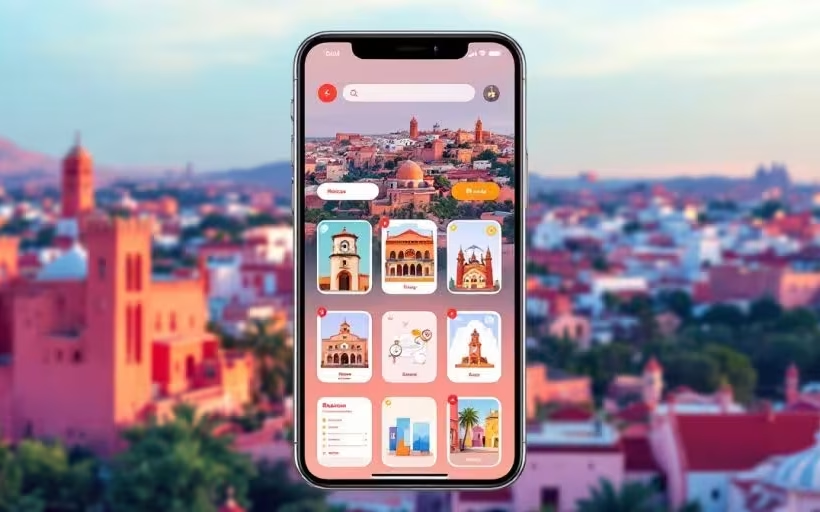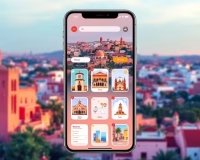- Mon - Sat 8:00 - 17:30, Sunday - CLOSED

How to Create a Mobile Application in Morocco: Key Steps
Creating a mobile application in Morocco may seem complicated, but by following the right steps, it becomes easier. This article will guide you through the essential steps to develop a successful application that meets the needs of users and the market. Key Points to Remember Understanding user needs is essential for designing an effective application. The UX/UI design must be intuitive to ensure a good user experience. The choice of development technologies influences the application’s performance. Testing the application before deployment allows for correcting errors and improving quality. Continuous maintenance is crucial to ensure that the application remains functional and relevant. Application Analysis and Design Understanding User Needs To create an effective mobile application, it is essential to understand user needs. This starts with market research to identify the problems your application can solve. Here are some questions to consider: Who are your target users? What problems are they currently facing? How can your application improve their daily lives? Drafting the Specifications Once the needs are identified, it is crucial to write a specification document. This document should include: The essential features of the application. The technical and aesthetic requirements. A development timeline. Project Planning Planning is a key step to ensure the success of your application. Here are some steps to follow: Establish a development schedule. Involve all stakeholders in the project. Plan for technical adjustments before launch. Careful planning helps meet deadlines and optimize resources. By following these steps, you will be able to create an application that meets user expectations and stands out in the market. Boost your SME’s digital presence in Morocco with mobile applications: visibility, engagement, and guaranteed growth. UX/UI Design for an Optimal Experience Creating Intuitive Mockups To design a successful mobile application, it is essential to create intuitive mockups. These mockups allow you to visualize the application before its development. Here are some key steps: Initial sketch: Draw a sketch of the application to define its organization. Low-fidelity mockup: Create a simplified version to test navigation ideas. High-fidelity mockup: Develop a detailed version with graphical elements and interactions. Ergonomics and Simplified Navigation Ergonomics is crucial to ensure smooth navigation. Here are some principles to follow: Simplicity: Avoid unnecessary elements that can distract the user. Consistency: Use similar design elements throughout the application. Accessibility: Ensure that the application is usable by everyone, including people with disabilities. User Testing and Feedback User testing is essential to improve the experience. It allows for gathering valuable feedback. Here’s how to proceed: Organize testing sessions: Invite users to test the application in a controlled environment. Collect data: Note user behaviors and comments. Make adjustments: Use feedback to fix issues and improve the interface. In summary, UX/UI design is an iterative process that requires constant testing and adjustments to provide an optimal user experience. The goal is to make the application enjoyable and easy to use. Development and Technical Integration Choosing Technologies and Platforms The choice of technologies is crucial for the success of your application. It is essential to select the right platforms to reach your target audience. Here are some popular options: iOS: Uses Swift, ideal for Apple users. Android: Uses Kotlin, reaching a broader audience. Cross-platform: Technologies like React Native allow for development across multiple systems with a single codebase. Developing Features Development should be done in an agile manner, allowing for quick adjustments. Here are the key steps: Feature planning: Define what the application should do. Iterative development: Create successive versions to test and improve. System integration: Ensure that the application works well with other existing systems. Integration with Existing Systems Integration is essential to ensure that your application works well with other tools. This may include: APIs: To connect your application to other services. Databases: To store and manage user data. Payment systems: To facilitate online transactions. In summary, developing a mobile application in Morocco requires careful planning and a good understanding of available technologies. This allows for creating an application that meets user needs and is suited to the local market. Our agency, an expert in mobile application development in Morocco, offers innovative solutions tailored to your needs. Testing and Quality Assurance Functional and Technical Testing Functional and technical testing are essential to ensure that your application works as intended. It is crucial to verify each feature to ensure it meets user needs. Here are some steps to follow: Define test cases based on requirements. Execute tests in a controlled environment. Document results and anomalies. Bug Resolution and Improvements Once testing is complete, it’s time to resolve identified bugs. This may include: Prioritizing bugs based on their impact on the user. Implementing temporary solutions if necessary. Retesting after fixes to ensure everything works. Final Validation and Deployment Preparation Before launching your application, a final validation is necessary. This involves: Conducting beta tests with real users to gather feedback. Ensuring all features are operational. Preparing documentation for deployment. In conclusion, testing and quality assurance are essential steps to ensure the success of your mobile application. By following these steps, you ensure that your product is ready to be launched in the market. Don’t forget that choosing a mobile application development agency in Morocco can also influence the quality of your final product. Deployment and Ongoing Maintenance Publishing on Stores Once your application is ready and the feedback from the beta version is positive, it’s time to publish it on the stores. With your developer account, you can submit your application on iOS and Android platforms. After submission, wait for approval for it to be available for download. During this wait, it’s wise to start promoting your application on social media. Here are some strategies to consider: Create presentation videos. Share attractive screenshots. Offer launch promotions to entice early users. Monitoring Performance and Updates Once the application is online, the work doesn’t stop there. It is crucial to monitor the performance of your application. This includes analyzing usage data and reading user feedback. Here are some actions to take: Analyze usage statistics. Identify and fix reported bugs. Plan regular updates to improve user experience. Technical Support and Future



